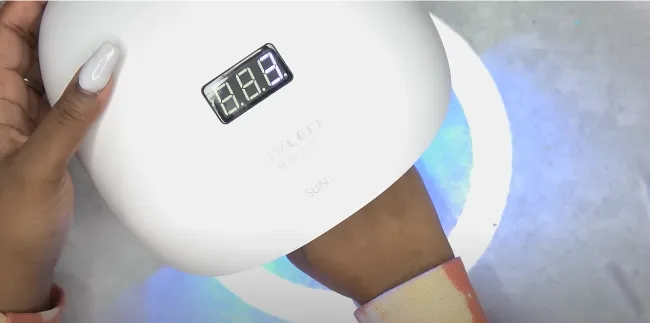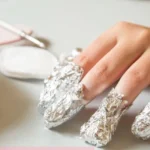How Long Should Nails Be Under UV Light? (The Right Timing for Perfect Gel Nails)
If you love the glossy, chip-resistant finish of gel nails, you already know UV or LED curing is the magic step that locks everything in place. But one of the most common questions beginners (and even seasoned gel lovers) ask is: how long should nails be under UV light?
The answer isn’t always one-size-fits-all. The curing time depends on the type of lamp you’re using, the brand of polish, and even the thickness of your layers. Let’s break it down so you can get salon-quality results every time — without over-curing or under-curing your nails.
Why UV Light Is Essential for Gel Nails
Unlike regular polish, gel polish doesn’t air-dry. It’s made with special polymers that need UV (ultraviolet) or LED light to harden. This process, called curing, transforms the liquid gel into a hard, glossy surface that resists chipping for weeks.
Without proper curing, your gel manicure won’t last. Too little time, and your nails will remain tacky or peel early. Too much time, and you may risk brittleness or heat spikes.
How Long Should Nails Be Under UV Light?
For most gel polishes, UV lamps require about 2 minutes (120 seconds) per coat to cure fully.
Here’s a quick guide:
- UV Lamp (36 watts): 2 minutes per coat.
- LED Lamp (24–48 watts): 30–60 seconds per coat.
- Top coats & builder gels: May need slightly longer, depending on thickness.
Pro tip: Always check the instructions on your gel polish bottle — different brands may vary slightly in curing times.
Signs Your Nails Are Fully Cured
- The gel feels hard to the touch.
- There’s no smudging when you gently press.
- The polish has a consistent, glossy shine.
If your nails still feel tacky after curing, don’t panic — that’s usually the sticky “inhibition layer.” Simply wipe it off with a lint-free pad soaked in isopropyl alcohol.
Can You Over-Cure Gel Nails?
Yes, it’s possible. Leaving nails under UV light too long can:
- Make the gel overly rigid, leading to cracks or chips.
- Cause discoloration or dullness.
- Create heat spikes (a burning sensation while curing).
That’s why sticking to the recommended curing time is important.
Factors That Affect Curing Time
1. Type of Lamp
- UV lamps: Cure more slowly but work with all gel brands.
- LED lamps: Faster, energy-efficient, but may not cure older gel formulas.
2. Thickness of Gel Layers
Thicker coats = longer curing. Apply thin, even layers for best results.
3. Lamp Wattage
A weak lamp may require extra curing time. For consistent results, use at least a 36-watt UV lamp or a 48-watt LED lamp.
4. Gel Formula
Some brands are designed for ultra-fast curing, while builder gels may need extra time. Always follow manufacturer guidelines.
Tips for Perfect Curing Every Time
- Apply thin coats. Thick layers don’t cure evenly and may wrinkle.
- Keep nails flat. Ensure even exposure by placing your whole hand flat inside the lamp.
- Replace bulbs. UV bulbs lose strength over time — replace every 6 months for reliable curing.
- Use a quality lamp. A professional-grade lamp gives consistent results, unlike cheap versions that under-cure.
Health & Safety with UV Light
Worried about UV exposure? While curing times are short, dermatologists recommend protecting your hands with UV-protective gloves or applying a thin layer of broad-spectrum sunscreen before curing. This helps reduce long-term exposure risks.
Final Thoughts
So, how long should nails be under UV light? For most gel polishes, about 2 minutes under a UV lamp or 30–60 seconds under an LED lamp per coat is just right. Stick to thin layers, follow your polish brand’s instructions, and always use a reliable lamp.
With the proper timing, you’ll get that flawless, glossy finish that makes gel manicures so irresistible — and long-lasting.



